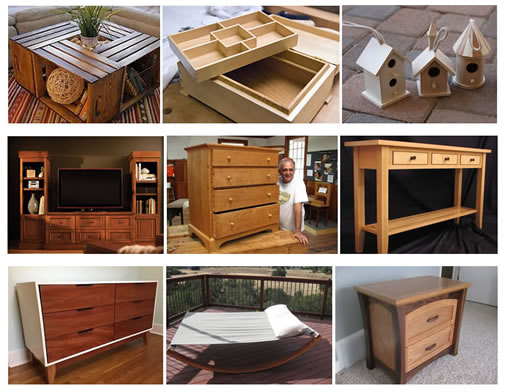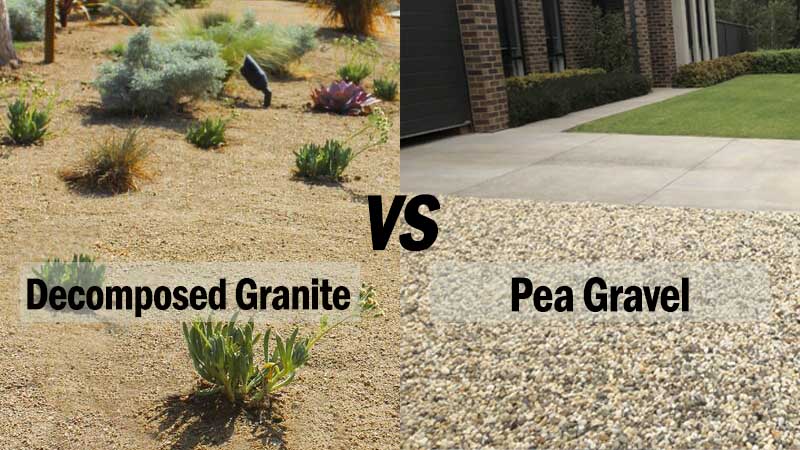Are you considering landscaping your outdoor space? If so, it’s important to understand the differences between three common landscape materials: crushed granite, decomposed granite (DG), and crushed stone. While these terms might seem interchangeable, it’s crucial to recognize the distinct differences that set them apart.
Is Crushed Granite the same as Decomposed Granite?
Crushed granite, as the name suggests, has been crushed mechanically into smaller particles. In contrast, decomposed granite (DG) undergoes a natural weathering process that results in a finer texture. Their different textures and compositions make them versatile for various landscaping endeavors and specific applications.
Decomposed Granite vs. Crushed Granite Comparison Table
| Criteria | Decomposed Granite | Crushed Granite |
|---|---|---|
| Texture | Finer texture, smoother | Coarser texture, rougher |
| Color Range | Diverse range of colors | Limited, typically grays |
| Stability | Stable but may require periodic redressing and recompacting | Stable and compacts well, creating a harder surface |
| Applications | Versatile, suitable for various landscaping projects | Versatile, used in pathways, driveways, patios, and more |
| Foot Comfort | Generally more foot-friendly due to finer texture | May be harder on the feet due to rough edges |
| Cost | Affordably priced | Generally cost-effective |
| Maintenance | Requires periodic maintenance for optimal performance | It may be harder on the feet due to rough edges |
| Best Suited For | Landscaping, pathways, and areas prioritizing a natural appearance | Outdoor projects requiring stability and durability |
| Variants | It may need occasional redressing and recompacting | Natural or loose DG stabilized DG, resin-coated DG |
Crushed Stone vs. Crushed Granite
The primary distinction lies in the composition of crushed stone and crushed granite. Crushed stone potentially includes other rocks and is predominantly made of limestone. In contrast, crushed granite is mainly composed of granite itself.
You may also like:
Decomposed Granite
Decomposed granite is commonly associated with “fines” due to its elevated content of fine sand. Fines offer a softer underfoot texture, making DG an ideal choice for pathways, driveways, and patios. This feature sets it apart within the spectrum of crushed stone products.
DG is also available in different colors, including buff, brown, gold tones, rose, pink variations, steel blue, and more.

There are three main types of decomposed granites.
- Natural or Loose DG: Ideal for projects where flexibility and a more natural appearance are prioritized. It works well in casual landscapes for mulching, patios, and pathways.
- Stabilized DG: Well-suited for areas that demand enhanced stability and durability. It’s an excellent choice for high-traffic surfaces like driveways and walkways.
- Resin-Coated DG: Good for projects where both durability and aesthetics are paramount. It’s an excellent option for upscale landscaping, patio surfaces, and sports surfaces.
Pros of Decomposed Granite:
- Decomposed granite (DG) exhibits excellent stability, creating a firm and even surface when properly compacted. This stability contributes to its reliability for various landscaping applications.
- DG boasts high permeability, efficiently managing water runoffs. This characteristic enhances its suitability for outdoor projects, ensuring effective drainage and minimizing water-related issues.
- The material comes in diverse natural colors, adding a rustic charm to landscapes. The availability of various hues provides ample options for creating visually appealing outdoor spaces.
Cons of Decomposed Granite
- One notable concern of decomposed granite is its tendency to stick onto shoes, potentially causing inconvenience. To mitigate this issue, it’s advisable to avoid using DG near home entrances or implement doormats to prevent the material from affecting indoor flooring surfaces.
- Additionally, it’s crucial to acknowledge that decomposed granite requires periodic maintenance. Unlike concrete driveways, it is not a maintenance-free material. Regular redressing and re-compacting are necessary to preserve its stability and performance.
Crushed Granite
Crushed granite differs from decomposed granite (DG) in texture, offering a rougher surface. Its color range is typically confined to grays, spanning from light gray to black, presenting fewer color options than decomposed granite. When aiming for a durable path, crushed granite proves effective as it compacts well, creating a robust and stable surface.
In contrast to decomposed granite and materials like pea gravel, crushed granite can be less foot-friendly due to its rough edges. While it provides enhanced stability, the coarser texture may make it slightly harder on the feet.
Pros of Crushed Granite:
- Stability and Durability: Crushed granite, when properly compacted, provides a stable and even surface; it’s also a durable material that can withstand outdoor elements and heavy use, ensuring longevity in landscaping projects.
- Cost-Effective: Crushed granite is generally more affordable than other landscaping materials, making it a budget-friendly option.
Cons of Crushed Granite:
- Foot Comfort: Due to its rough texture and potential for sharp edges, crushed granite may be less comfortable for barefoot walking compared to smoother alternatives like pea gravel.
- Limited Color Range: Crushed granite typically comes in a more restricted color range, mostly grays from light to dark shades, providing fewer color options compared to some alternatives.
- Maintenance: While durable, crushed granite may require periodic maintenance, such as redressing and re-compacting, to retain its stability and appearance over time.
- Shoe Adherence: Crushed granite tends to stick to shoes, which can be inconvenient, especially in areas near home entrances, potentially leading to debris and scratched floors inside the home.
Conclusion
Choosing between DG and crushed granite for your landscaping project involves various factors. Both options are comparable in terms of price per cubic foot. However, finer materials might require more cubic feet to fill a designated area. Your decision should hinge on the desired texture, the importance of color, and the anticipated traffic in the area.
We have walked through the differences between these two types of hardscaping materials, I hope this makes it easier for you to make an informed decision on which material best suits your desired project.
Feel free to ask any questions you may have in the comment section.

John Brown
John Brown brings a wealth of experience and passion for DIY, Home and Garden, and Woodworking. With a dedication to empowering enthusiasts, he shares insights, tips, and comprehensive guides to help you transform spaces and master woodworking skills.


